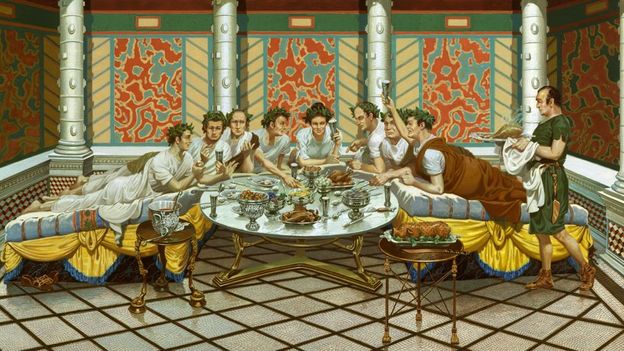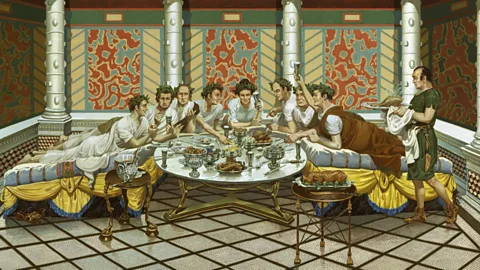The social networks of Ancient Rome

 Corbis
CorbisOur pick of the week’s best arts and literature stories – including how the Roman book trade worked, sign-language for rappers and Clive James on the Sopranos.
Clive James | Telegraph | 20 June 2013
Classic appreciation from 2004, republished with a new introduction by the author. “In the dark night of the soul, it is often three o’clock in the afternoon on the pool terrace of a mobster’s house in New Jersey. The rule of law exists only to be flouted; power to be flaunted; any scruple to be parodied. It’s appalling. I love it. Love it more, in fact, than the Godfather movies, which are supposedly the superior cinematic achievement.”
The Shakespeare Of The Lunatic Asylum
Peter Conradi | Spectator | 22 June 2013
Review of The Dostoevsky Archive: Firsthand Accounts of the Novelist from Contemporaries and Rare Periodicals by Peter Sekirin. “Dostoevsky’s life was even weirder than his fiction. He was born in 1821, the son of a surgeon whom he believed to have been killed by his own serfs. He was often poor, and so he is the only great Russian writer of his generation whose first language was Russian rather than French.”
How ancient Roman writers promoted their books. With a well-placed dedication, mainly. “It was crucial to choose the right person to dedicate the book to. The ideal candidate would be famous, influential and somewhat vain, so that he would be sure to mention the book to his friends, thus ensuring that people heard about it. He would also have an impressive library with plenty of traffic from visiting scholars and philosophers.”
How Do You Say Shaolin In Sign Language?
Amy Nelson | Slate | 21 June 2013
Profile of Holly Maniatty, sign-language interpreter for rock and rap concerts. Translates hip-hop in real time. “Her prep work includes researching dialectal signs to ensure accuracy and authenticity. An Atlanta rapper will use different slang than a Queens one, and ASL speakers from different regions also use different signs, so knowing how a word like guns and brother are signed in a given region is crucial for authenticity.”
Alfred Brendel | New York Review of Books | 20 June 2013
A joy throughout. On Mozart: “His piano sonatas seem to me, with few exceptions, underrated. Artur Schnabel has splendidly summed up why: they were too easy for children and too difficult for artists.” On Beethoven’s piano concertos: “One could jokingly speak of two very lively teenagers (B flat and C major), a young man (C minor) with a strongly pronounced inner life (E major), and their parents (G major — mother, E flat — father).”
Igor Stravinsky and The Rite of Spring
Robert Craft | Times Literary Supplement | 19 June 2013
Centenary tribute from a friend of the composer. Long, discursive, not always easy going, but full of interesting detail. Original inspiration came from the work of Lithuanian painter Mikalojus Ciurlionis. “It is scarcely believable that The Rite of Spring, and before it The Firebird and Petrushka, were written by a composer still in his twenties, slightly more a decade after the death of Johannes Brahms”
Adam Gopnik | New Yorker | 24 June 2013
Gertrude Stein’s style became Hemingway’s style, and thus a model for modern American prose: Flat words, subtle thoughts, studied simplicity. “A lot of its effect is achieved by the ridiculously straightforward device of removing normal punctuation. Any sentence, no matter how many qualifications it contains, is almost always written by Stein in commaless, undivided form. This makes her thoughts seem plain even when they are very fancy”.
Source link




